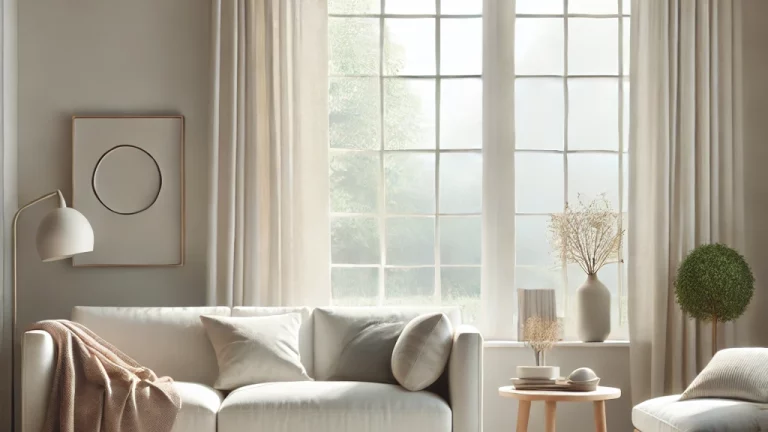
Minimalism for a Modern Life: How to Declutter Your Home and Mind
In today’s fast-paced world, where distractions are everywhere and stress levels run high, minimalism offers a refreshing way to simplify life and find clarity. At its core, minimalism is about living intentionally—removing what doesn’t serve you to make room for what truly matters. This philosophy not only applies to your physical space but also to your mental well-being. Let’s explore practical steps to declutter both your home and your mind, so you can embrace a more fulfilling, modern lifestyle.
Why Minimalism Matters in Modern Living
The modern era bombards us with choices, responsibilities, and material possessions. This abundance can lead to overwhelm, decision fatigue, and even anxiety. Minimalism helps to counteract this by encouraging intentional living. By decluttering your home, you’ll create a serene environment that fosters productivity and peace. Similarly, mental decluttering can help you focus better, reduce stress, and prioritize what truly brings joy and purpose to your life.
Decluttering Your Home: Step-by-Step Guide
Minimalism at home doesn’t mean getting rid of everything you own. Instead, it’s about keeping items that serve a purpose or bring you joy. Here’s how to get started:
1. Start Small and Set Goals
Begin with one small area, like a drawer or shelf. Set a goal, such as clearing out your kitchen utensils or organizing your wardrobe. Starting small helps build momentum and makes the process less overwhelming.
2. Follow the “One-Year Rule”
If you haven’t used an item in the past year, it’s likely time to let it go. Donate, recycle, or sell items that no longer serve a purpose in your life.
3. Sort Into Categories
Create three piles: Keep, Donate, and Discard. This method simplifies decision-making and gives a clear plan for dealing with your belongings.
4. Embrace Digital Minimalism
Decluttering isn’t limited to physical items. Organize your digital life by deleting unnecessary files, unsubscribing from spam emails, and tidying up your phone’s apps. A clean digital space contributes to a clearer mind.
5. Adopt a “One In, One Out” Policy
To maintain your minimalist lifestyle, commit to removing one item for every new one you bring into your home. This prevents clutter from piling up again.
Decluttering Your Mind: Achieving Mental Clarity
Minimalism isn’t just about your physical environment; it’s also about finding mental balance. A cluttered mind can leave you feeling drained and unfocused. Use these techniques to clear mental clutter:
1. Practice Mindfulness
Mindfulness is the art of being present in the moment. Whether it’s through meditation, deep breathing, or mindful walks, taking time to focus on the present can significantly reduce stress.
2. Limit Information Overload
In a world of constant notifications and breaking news, it’s easy to feel overwhelmed. Set boundaries for screen time, and curate your social media feeds to prioritize positivity and relevance.
3. Declutter Your To-Do List
Evaluate your daily tasks and prioritize what truly matters. Delegate or eliminate unnecessary responsibilities that don’t align with your goals.
4. Journal Your Thoughts
Writing down your thoughts can help you organize your mind and let go of worries. A gratitude journal is particularly effective for shifting focus to the positive aspects of life.
5. Say No Without Guilt
Learning to say no to commitments that don’t align with your values is essential for mental clarity. Prioritize activities that nurture your well-being and align with your goals.
Benefits of Minimalism
Minimalism offers a wide range of benefits for both your home and mind. Here are a few to inspire you:
- Reduced Stress: A decluttered home and mind promote a sense of calm and reduce feelings of overwhelm.
- Improved Focus: Simplifying your environment and mental load helps you concentrate on what truly matters.
- More Time and Energy: With fewer distractions, you can invest more time and energy in meaningful activities and relationships.
- Financial Freedom: Spending less on unnecessary items and focusing on quality over quantity can lead to significant financial savings.
Sustaining a Minimalist Lifestyle
Decluttering is only the first step; maintaining a minimalist lifestyle requires ongoing effort. Here are some tips to help you stay on track:
- Regular Decluttering: Schedule a monthly check-in to assess and remove items or commitments that no longer serve you.
- Be Mindful of New Purchases: Before buying something new, ask yourself if it’s truly necessary and aligns with your values.
- Cultivate Gratitude: Focus on appreciating what you have rather than longing for what you don’t.
- Involve Your Family: Encourage your loved ones to embrace minimalism, creating a supportive environment for maintaining these habits.
Final Thoughts
Minimalism is more than just a trend; it’s a powerful lifestyle choice that can transform the way you live and feel. By decluttering your home and mind, you can create space for joy, peace, and purpose. Remember, minimalism isn’t about perfection or deprivation—it’s about making intentional choices that align with your values. Start small, be consistent, and enjoy the freedom and clarity that come with living a minimalist life.


